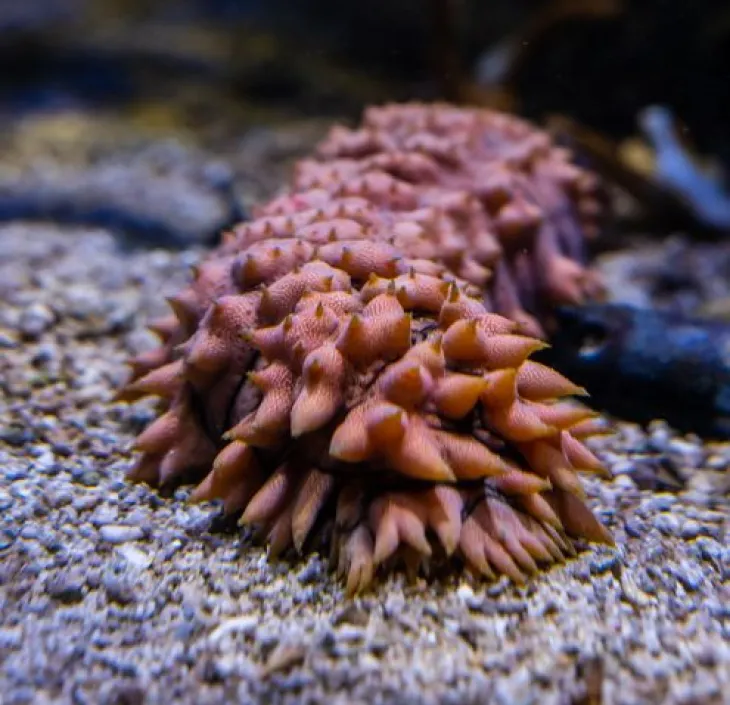Where is the animal to be found?
The sea cucumber is an echinoderm, a benthic marine animal - it lives on the sea floor. It lives preferably on gravel and hard seabeds covered with a layer of coral sand.
This invertebrate is related to starfish, sea urchins and brittle stars. It is mainly found in shallow coral areas.
How can it be recognised?
The sea cucumber is intriguing. Seeing this cylindrical body bristling with spikes, where it is difficult to distinguish the mouth from the cloaca, it is justifiable to ask: is it an animal, a vegetable or a plant? Does it move?
2.5 kg on average, but can weigh up to 7 kg.
What is distinctive about it?
It plays a significant role in the balance of the coral environment. In fact, its diet, which is based on organic waste made up of dead plankton and plant remains, has a positive effect on cleaning the sediment. Juveniles and adults are benthic epibionts, which means that the sea cucumber can be inhabited by shrimps, crabs or fish from the Carapidae family. These "tenants" travel in and out of the anus or mouth or stay permanently.
Threat and protective measure
The sea cucumber is primarily consumed in Asia. Whether raw, fried, baked or smoked, it features on the menu.
Consequently, this commercial harvesting of the invertebrate coupled with late sexual maturity and low fecundity have serious consequences for the renewal of the sea cucumber population. According to some studies, the sea cucumber is considered to be overfished in at least 30% of its distribution area.
Therefore, this species is classified as endangered on the IUCN Red List.








